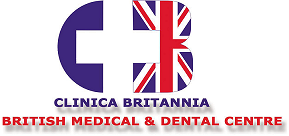At CLINICA BRITANNIA with no waiting lists we have at your disposal the best Surgeons and Anaesthetists under the co-ordination of our Consultant Physician. Any surgery can be performed at one of our leading hospitals (Alicante) followed by a fast recovery in a quiet environment with the company of your family whilst enjoying the landscape of Costa Blanca coast. Depending on your needs we can manage part or all of the process from the pre-operative period up to the recovery period which could include accommodation (Calpe) for you and your family before and after surgery and of course a hospital stay as brief and comfortable as possible.
We can perform the following plastic surgery procedures:
- BRAQUIOPLASTIA
- XANTHELASMA REMOVAL
- GYNECOMASTIA
- BLEPHAROPLASTY
- OTOPLASTY
- LIPOSUCTION
- RHINOPLASTY
- BREAST AUGMENTATION
- BREAST REDUCTION
- STOMACH REDUCTION
- VARICOSE VEINS
BRAQUIOPLASTY
A brachioplasty, commonly called an arm lift, is a surgical procedure to reshape and provide improved contour to the upper arms and connecting area of chest wall.[1] While “brachioplasty” is commonly used to describe a specific procedure for the upper arms, the term can also be used to describe any surgical arm contouring. Brachioplasty is often used to address issues such as excessive loose skin or excessive fat in the arms when it does not respond well to diet and exercise.[2] Brachioplasty is a common procedure for patients who have experienced massive weight loss and has gained popularity since 2000.
Brachioplasty techniques
Liposuction of the arms
The least-invasive manner to contour the upper arms is to simply remove extra fat via liposuction. However, traditional deep liposuction often leaves sagging and wrinkled skin. An alternative to this is Circumferential para-Axillary Superficial Tumescent (CAST) liposuction, which maximizes the skin retraction.[3]
Hidden/Minimal incision brachioplasty
Under the right conditions such as adequate skin elasticity and minimal excess skin, the surgical incision for the brachioplasty can be placed under the arm. This allows for easy concealment of the scar. Minimal incision brachioplasty includes lipoplasty of the upper arm, wide-axillary and upper-arm skin excision, and dermal suspension of the upper-arm skin to the axillary fascia.[4]
Traditional brachioplasty
The typical brachioplasty involves removing excessive loose skin via surgical excision, leaving a significant scar along the bottom of the upper arms.
Extended brachioplasty
If there is also a significant amount of loose skin that goes from the upper arms and continues along the chest wall, an extended brachioplasty may be called for. In an extended brachioplasty, the incision and excision of skin continues along the upper arm onto the area under the arm along the chest wall.
Fish-incision brachioplasty
This method is used for patients with an enormous amount of soft tissue excess. Fish-incision brachioplasty uses mathematical measurements and anatomic marking that allows the preoperative marking of the incision in the shape of a fish.[5]
Non- excisional brachioplasty
This technique is used to decrease the post- operative seroma formation and nerve injery. In this method liposuction is done for the arm with excessive liposuction under the area of excision to make it paper thin. Only the skin over the marked area is excised followed by invagination of the tissue and closure with dermal to dermal sutures and skin edge closure.
Superficial fascial system suspension
In this procedure anchoring of the arm flap to the axillary fascia is secured along with strong superficial fascial system repair of incisions. This method reduces the risk of widening or migration of scars and unnatural contours.[6][:]

